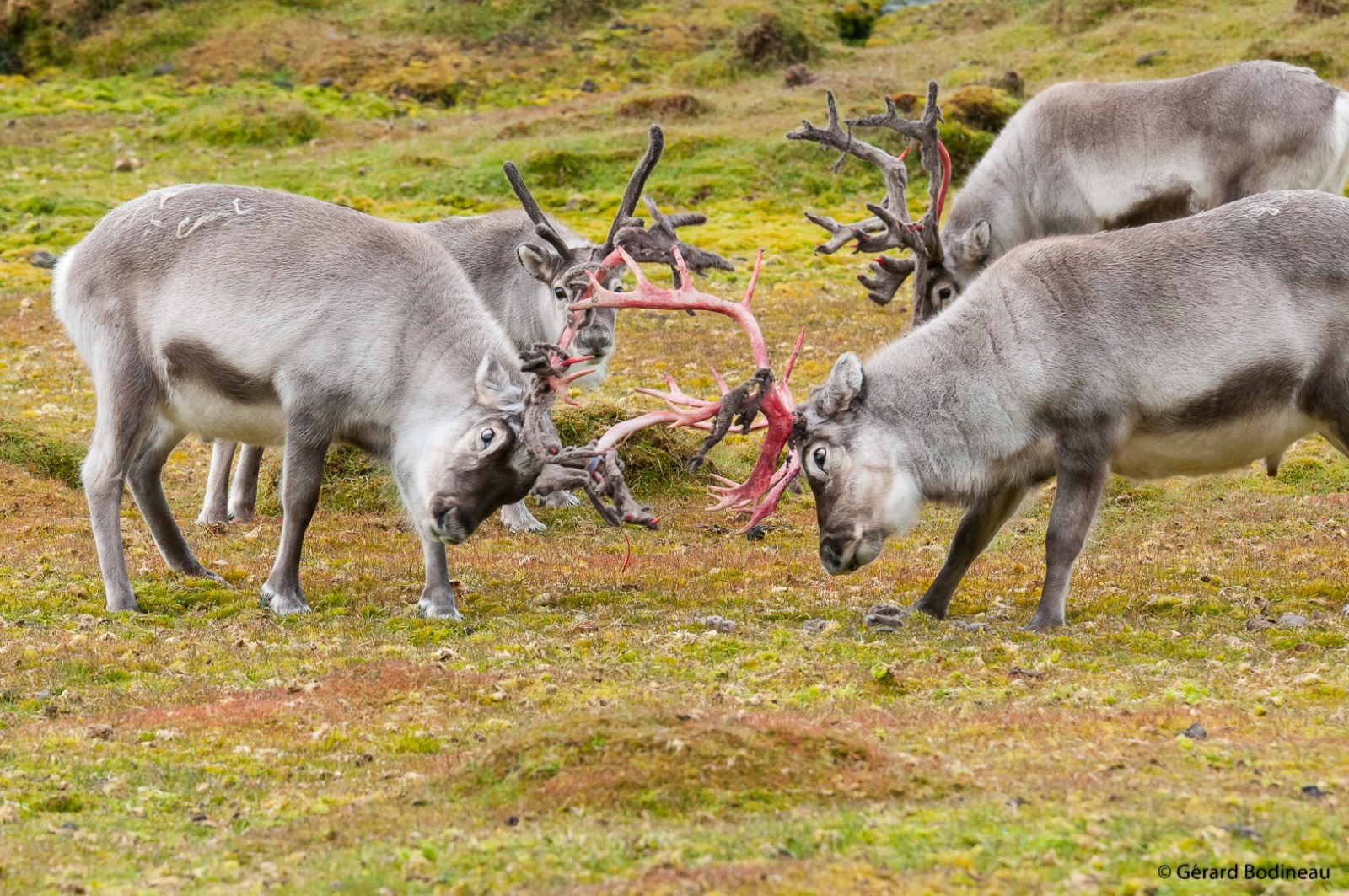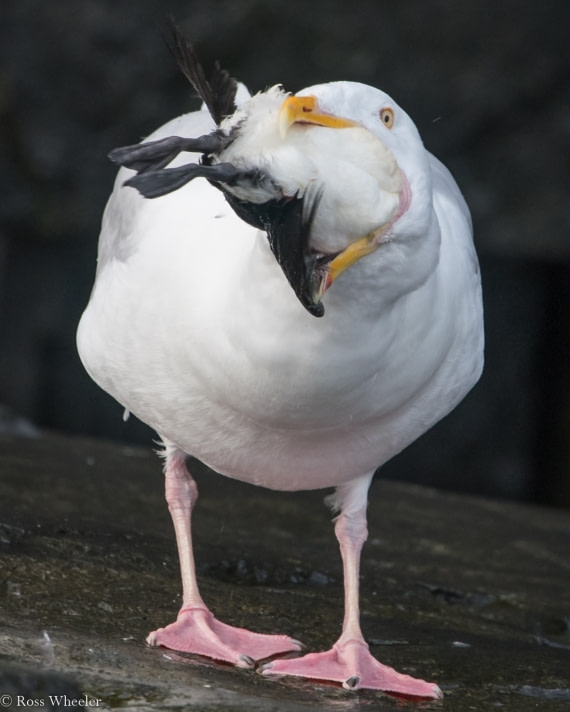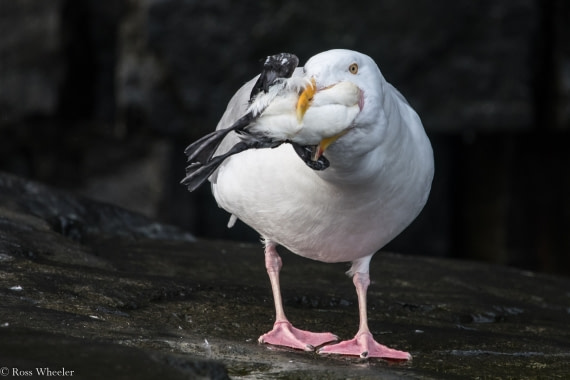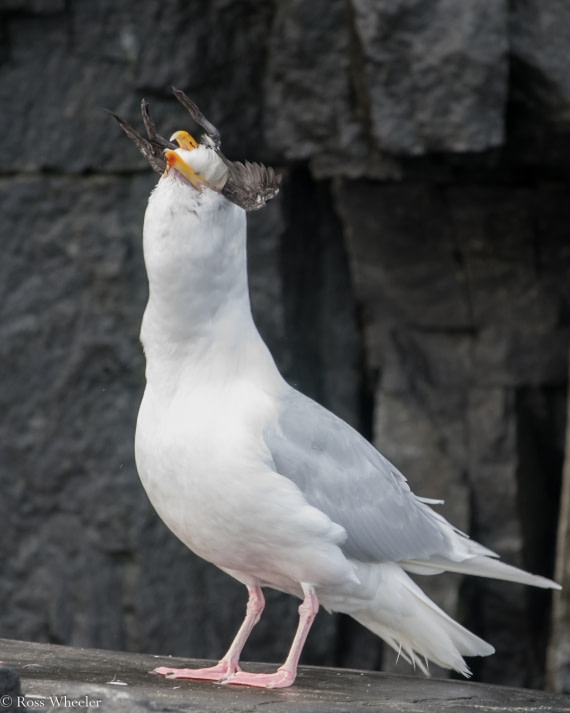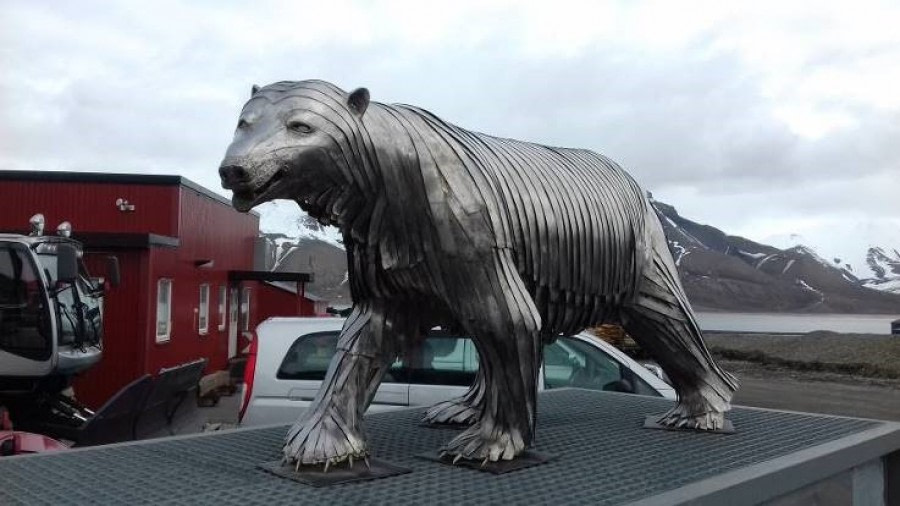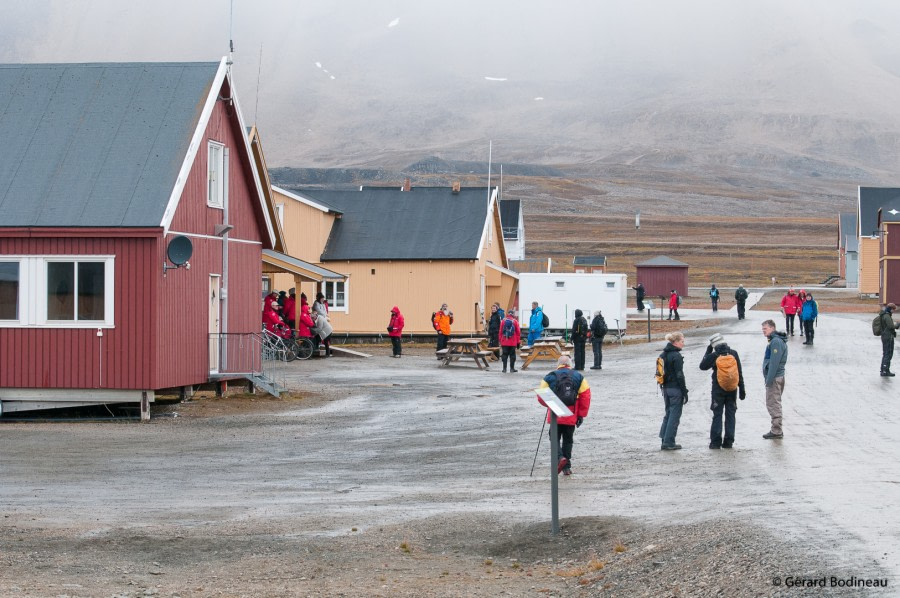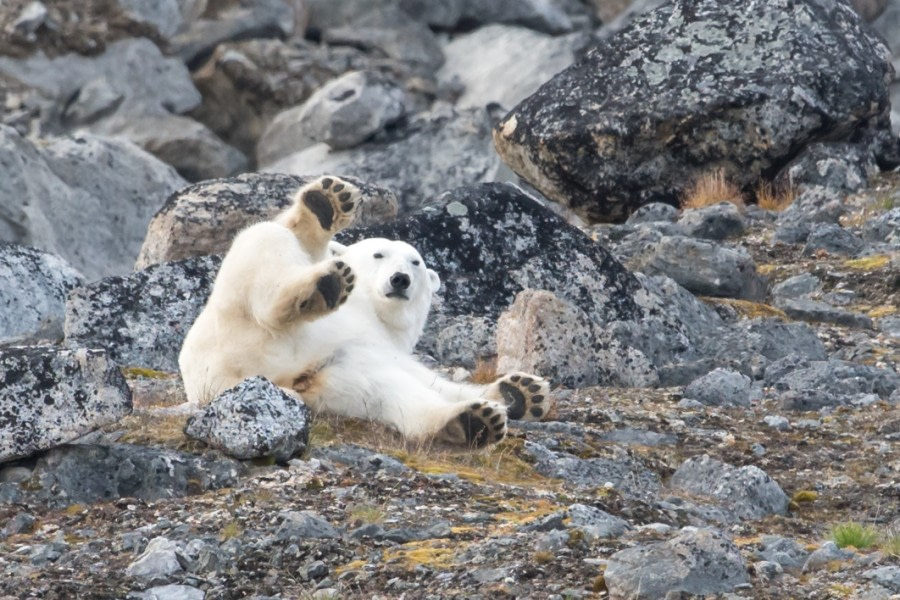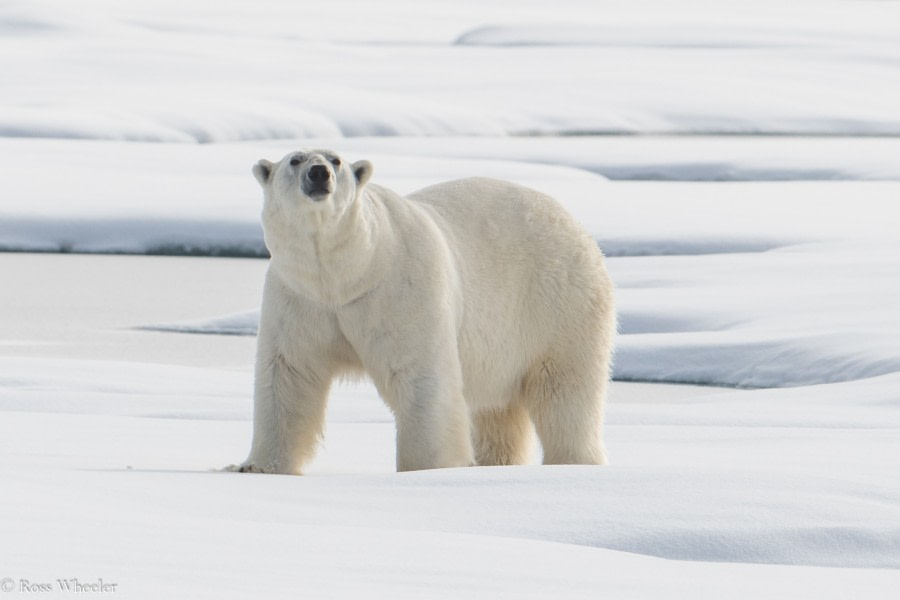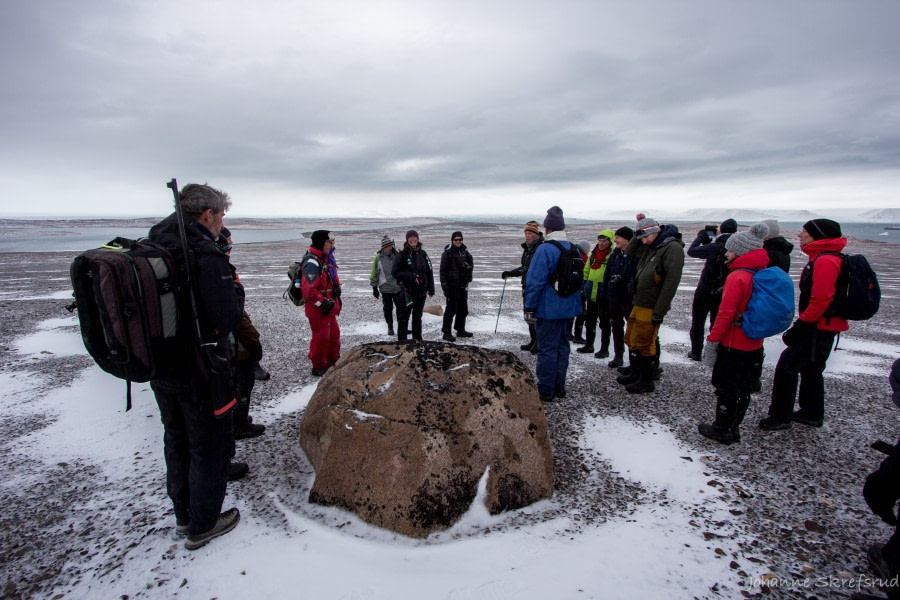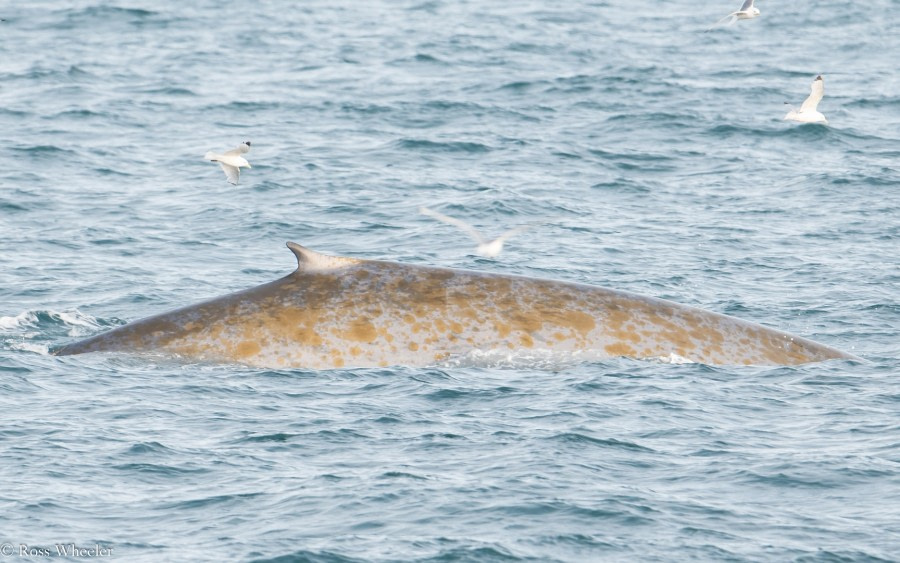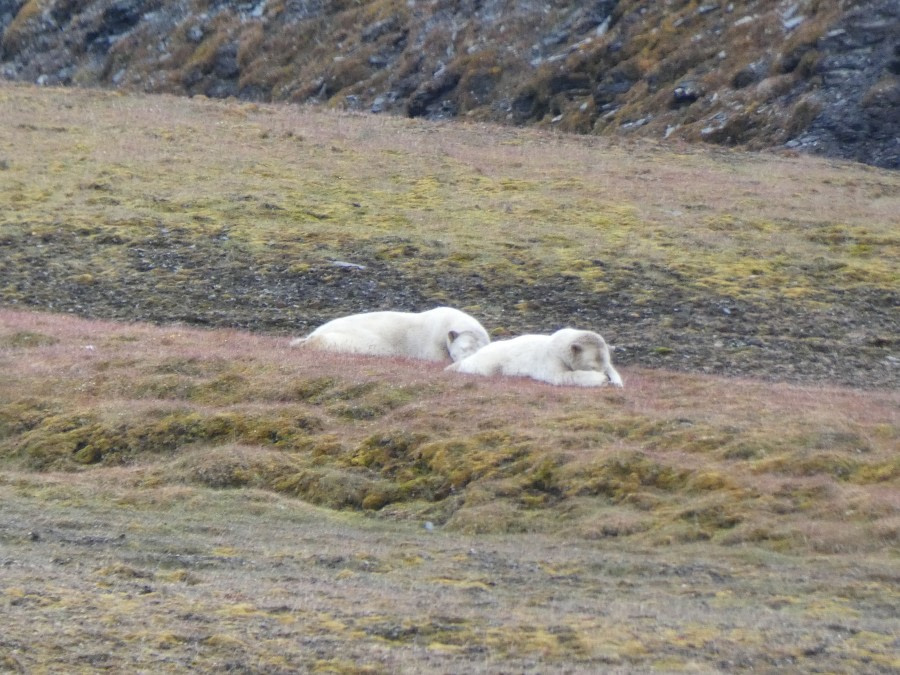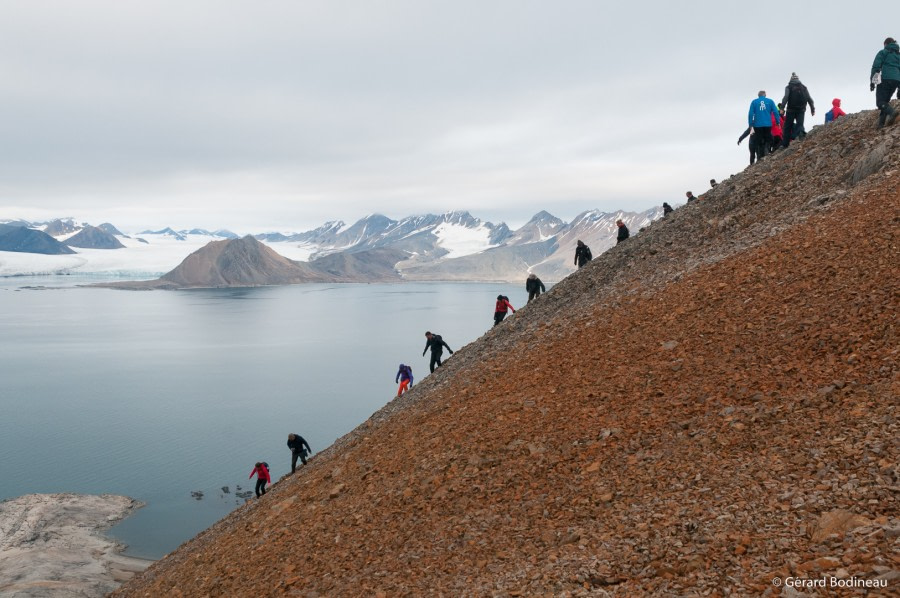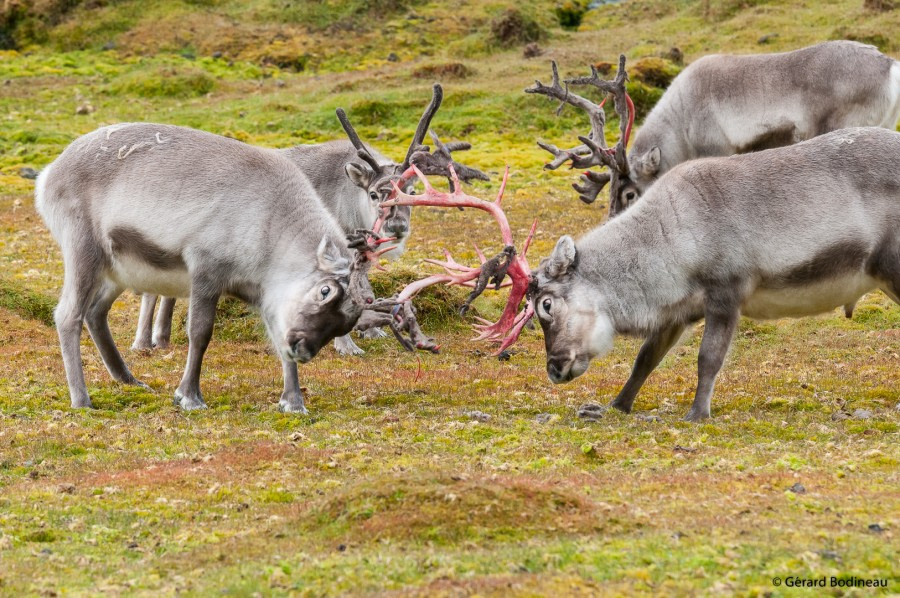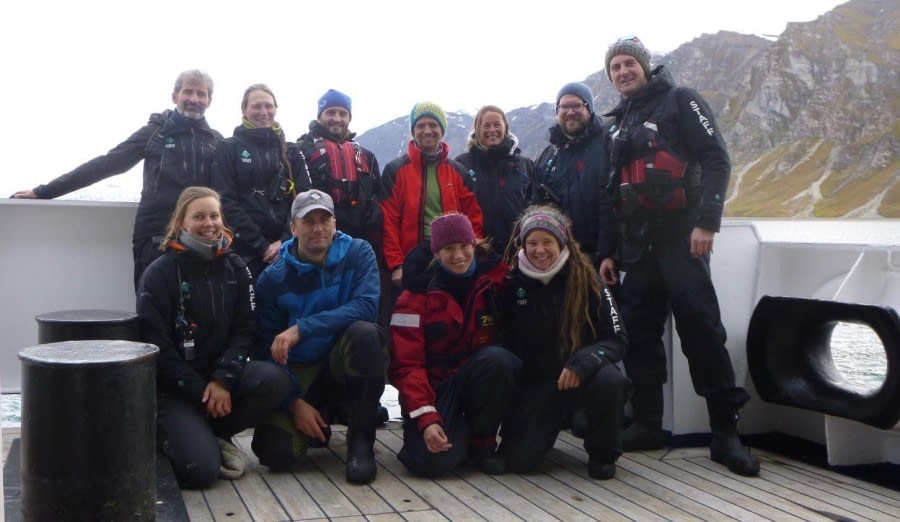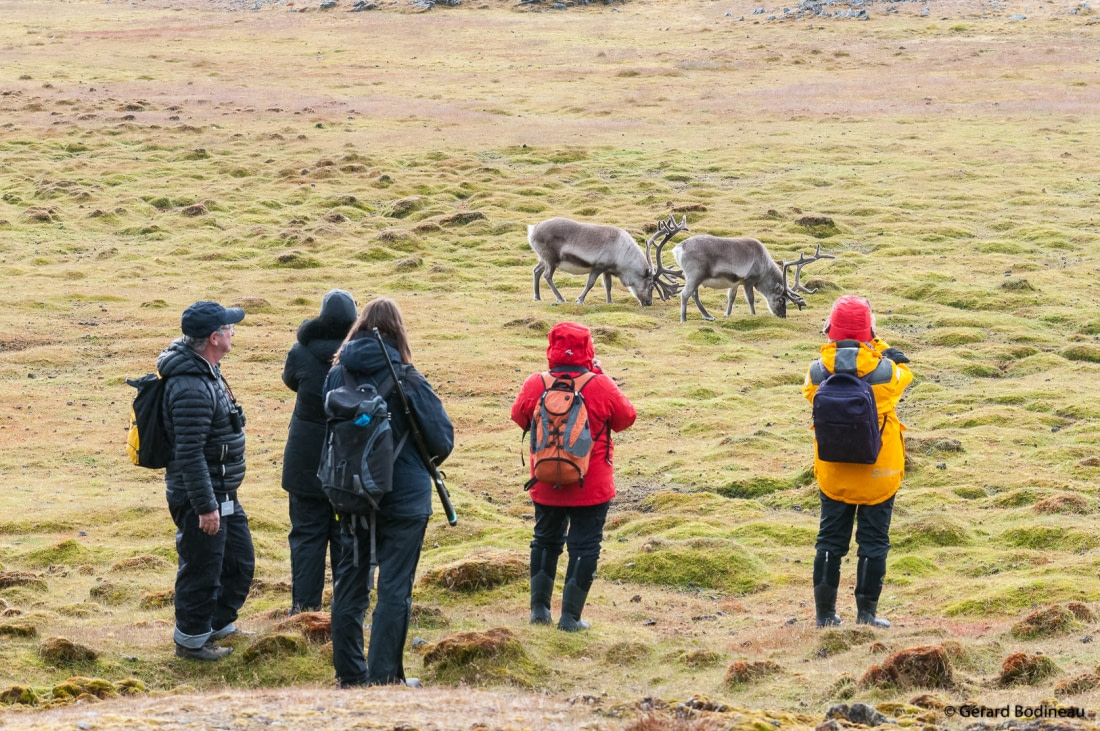| Datum: | 17.08.2019 |
| Positie: | 78°16’N - 015°18’E |
| Wind: | SSE 4 |
| Weer: | Overcast |
| Luchttemperatuur: | +5 |
Longyearbyen is situated at 78° north and, as such is one of the world’s most northerly settlements. It grew up as a coal mining town but now is home to around 2,000 residents who live and work here all year round. This number temporarily swells during the summer months with the arrival of thousands of visitors on cruise ships. Some of us had arrived a day earlier than our departure day on board Plancius and had time to explore the town and maybe take a day trip but many of us arrived at the airport during the afternoon and only had a short time to visit the town before making our way to the port to join our ship for the coming trip. We were met by members of the expedition team at the floating pontoons who helped us into lifejackets and onto the zodiacs for the short ride to the ship. From here we were shown to our cabins by the very welcoming hotel staff and found our luggage already there. We had some time to familiarise ourselves with our cabin before we were called to the Lounge to meet Philipp, our Expedition Leader, Captain Artur and the rest of the team. We had a glass of champagne to toast our voyage and Sigi, the Hotel Manager also gave us a briefing about life on board Plancius. This was followed by the mandatory safety briefing which was given by our Chief Officer Francois, which outlined aspects of safety on board and the abandon ship procedures. We then gathered at the muster station, the Lounge, wearing our big orange life jackets, the only time we hope to be wearing them. We were shown to the lifeboats on deck and by this time for dinner, which was a chance to meet with our fellow passengers before our last task of the day which was to collect our rubber boots from the boot room. With 24 hours of daylight many of us enjoyed some time out on deck during the evening spotting Fulmars, Guillemots, Kittiwakes and the tiny Little auks. It was a very pleasant evening on board.
